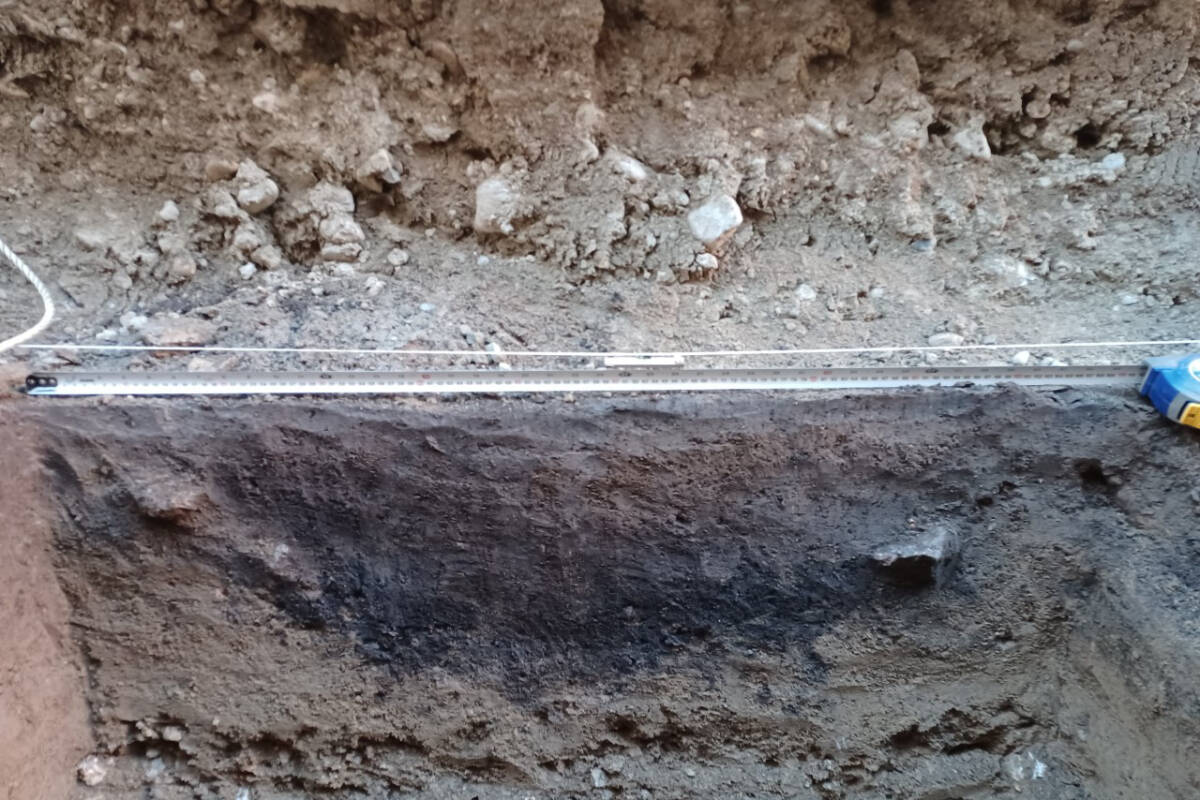Archaeologists continue to find more significant items at the Boitanio Mall site in Williams Lake.
Williams Lake First Nation (WLFN) rights and title manager Whitney Spearing told Black Press Media they unearthed a fire pit on Wednesday, Oct. 19, and a roasting pit on Thursday, Oct. 20.
Excavation work is being done at the site to replace a sewer pipe in anticipation of a new 82-unit housing development going into the upper level of the mall.
WLFN and its wholly-owned Sugar Cane Archaeology have pushed to be involved because in 1974 when the mall was being built an archaeological site was identified at the location.
Archer Cultural Resource Management (CRM) Ltd. is assisting with the oversight as well.
“They’ve been doing testing down in the bottom of the trench the whole time and they have been finding more bones and lithic materials every day,” Spearing said.
“The hearth or fire pit is significant because it was the first feature that we found that was still intact. The roasting pit is super significant because we rarely find them and even more rare that we do a full excavation on one.”
WLFN provided a photograph to media with an explanation indicating that “the roasting pit feature stands out against a background of original earth, in the form of a dark half-moon of soil with pieces of fire-altered rock (FAR), bone fragments calcined by burning, and lithic material (in this case flakes of rock) strewn throughout. Lithic material found in contexts like these are often residual from the processing of animals for food.”
Archer CRM’s project lead for the Boitanio Mall site excavation, Elissa Gagnon, said in a news release, the bone fragments will be examined for cut marks from stone tools.
“It’s a very interesting project and I’m glad to be a part of it,” noted Gagnon, “I wish I could go back in time and see what was going on here; why did they put this feature here? Why did they discard that tool?”
WLFN said once the water-main has been repaired there are no further ground-disturbing excavations needed for the completion of the renovation project.
Before the pit is filled in and paved over, the hearth feature will be flagged to ensure its visibility during any future ground-disturbing excavations.
Since Tuesday, Oct. 11, archaeological crews have been on site and announced last week some other items had been unearthed such as a projectile point, possibly from an arrow or a spear, and several pieces of lithic debitage (flakes of shattered stone created as a by-product of stone tool production).
READ MORE: Archaeological materials unearthed at Boitanio Mall in Williams Lake
Spearing said in 1974 when they started preparing to build the mall, human remains were discovered that were dumped over the ravine where A&W is today.
“Because of that the provincial archaeology branch was phoned and they started to do an excavation at the site even though it had been disturbed,” Spearing explained.
The excavation in 1974 unearthed stone tools and cache pits, including an intact birch bark basket inside a cache pit.
“Things were saved, but the human remains were pretty much destroyed,” Spearing said.
When Starbucks was being built at the corner of the mall lot, Spearing and her crew visited the Williams Lake Tribune to go through the newspapers from the 1974 time period about the archaeological finds.
They sent copies to the provincial archaeology branch and then to Exton and Dodge Surveyors who had done the original archaeological survey at the time.
“Doug Dodge had the originals from the 1970s so we sent that as well and the archaeological branch changed the boundary of the site and made it bigger,” Spearing explained.
READ MORE: VIDEO: Boitanio Mall excavation prompts archaeological scrutiny by Williams Lake First Nation
monica.lamb-yorski@wltribune.com
Like us on Facebook and follow us on Twitter

